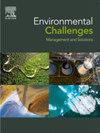Lessons learned from flash floods early warning system in a mountainous rur-urban region of Colombia
Q2 Environmental Science
引用次数: 0
Abstract
The city of Manizales, Colombia, located in the tropical Andes, faces recurrent hydroclimatological risks due to its mountainous terrain, high rainfall variability, and urban expansion into vulnerable areas. This article presents the evolution of different Early Warning System (EWS) into a Multi-Hazard Early Warning Systems (MHEWS), based on the United Nations' framework for disaster risk reduction. The transition was enabled through the integration of real-time hydroclimatic monitoring, development of tailored rainfall and river level indicators, and collaborative governance involving academia, communities and local authorities. Key indicators such as A25, A10min, P10Level, and imed have enhanced predictive capacity, though limited historical event data constrain full validation and efficiency assessment. Lessons learned emphasize the importance of adapting international alert protocols to local dynamics, improving real-time data coverage, and strengthening community participation. The study also highlights institutional and governance challenges, including short lead times, limited forecasting tools, and the absence of comprehensive disaster databases. Despite these limitations, the Manizales case demonstrates that localized innovation, institutional collaboration, and risk aware culture can drive the effective development of MHEWS in low- and middle-income mountainous regions. This experience offers transferable insights for similarly exposed cities across the tropics.
哥伦比亚山区城乡地区山洪预警系统的经验教训
哥伦比亚马尼萨莱斯市位于热带安第斯山脉,由于其多山的地形、高降雨量变动性以及城市向脆弱地区的扩张,该市面临着经常性的水文气候风险。本文介绍了基于联合国减少灾害风险框架的不同早期预警系统(EWS)向多灾种早期预警系统(MHEWS)的演变。通过整合实时水文气候监测、制定量身定制的降雨和河流水位指标,以及学术界、社区和地方当局参与的协作治理,实现了这一转变。关键指标如A25、A10min、P10Level和imed具有增强的预测能力,但有限的历史事件数据限制了充分的验证和效率评估。吸取的经验教训强调了使国际警报协议适应当地动态、改善实时数据覆盖和加强社区参与的重要性。该研究还强调了制度和治理方面的挑战,包括交货时间短、预测工具有限以及缺乏全面的灾害数据库。尽管存在这些限制,但马尼萨莱斯的案例表明,本地化创新、机构合作和风险意识文化可以推动中低收入山区MHEWS的有效发展。这一经验为热带地区同样暴露的城市提供了可转移的见解。
本文章由计算机程序翻译,如有差异,请以英文原文为准。
求助全文
约1分钟内获得全文
求助全文
来源期刊

Environmental Challenges
Environmental Science-Environmental Engineering
CiteScore
8.00
自引率
0.00%
发文量
249
审稿时长
8 weeks
 求助内容:
求助内容: 应助结果提醒方式:
应助结果提醒方式:


